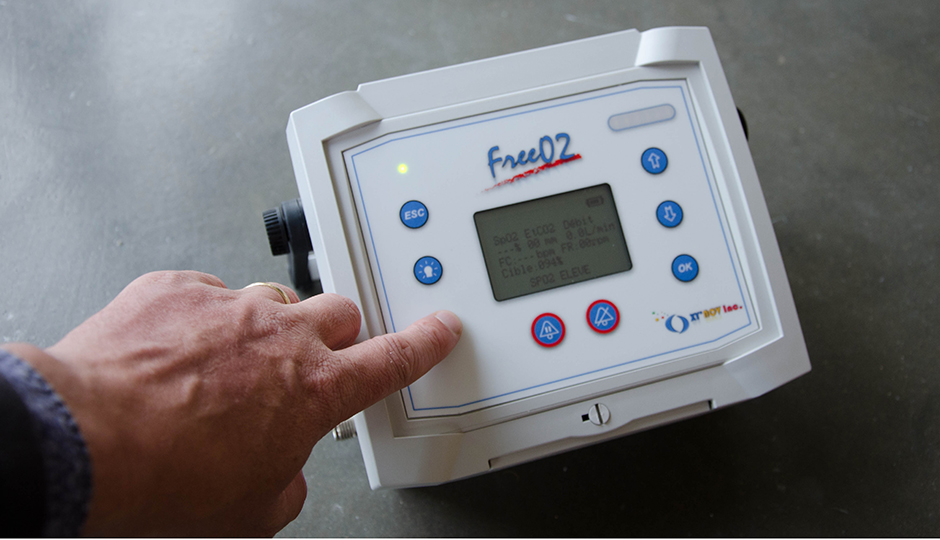Need O2? Oxygen therapy is being revived by François Lellouche, a researcher at the Québec Heart and Lung Institute, and his colleague Erwan L'Her, a respirologist in Brest, France. While current oxygen treatment systems date back to 1910, the two physicians have developed FreeO2, an innovative system that automatically adjusts oxygen flows for patients coming out of surgery or in cardiorespiratory distress.
Preliminary studies have shown that FreeO2 improves patient safety, leads to shorter hospital stays and generates significant savings for the health network.
In December 2014, SOVAR—a research commercialization firm affiliated with Université Laval—invested $100,000 to launch the leading-edge device on the European market in 2016 through Oxy'Nov, a corporation founded by the researchers. Preliminary studies have shown that FreeO2 improves patient safety, leads to shorter hospital stays and generates significant savings for the health network.
Standard oxygen flowmeters rely on a bobbin. While efficient, the system has its limitations: the manual settings are time consuming and the adjustment method is sub-optimal. Also, flowmeters do not record data for remote monitoring. Working with Université Laval engineering students, Dr. Lellouche, who is also a professor in the department of anesthesiology and critical care, designed a system equipped with sensors that check the patient's oxygen flow and key cardiorespiratory parameters remotely and at bedside. Desaturation (lack of oxygen) and hyperoxia (excess oxygen) no longer occur, and medical staff are able to quickly detect when a patient's condition worsens (for example, when the system continually increases oxygen levels).
Oxy'Nov aims to sell FreeO2 to hospitals next year and release a portable system for patients at home.




